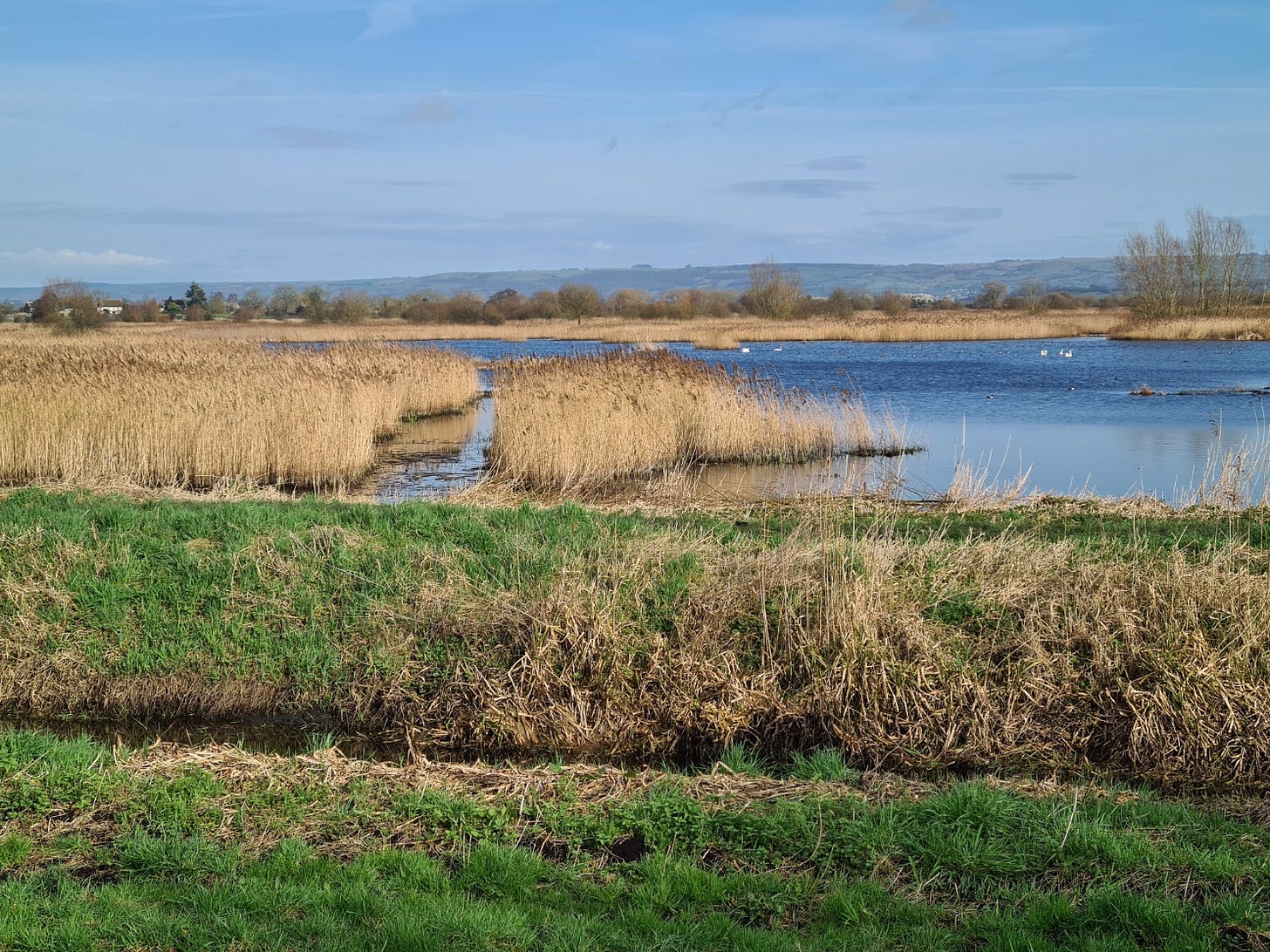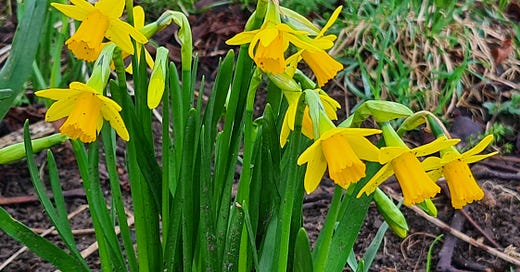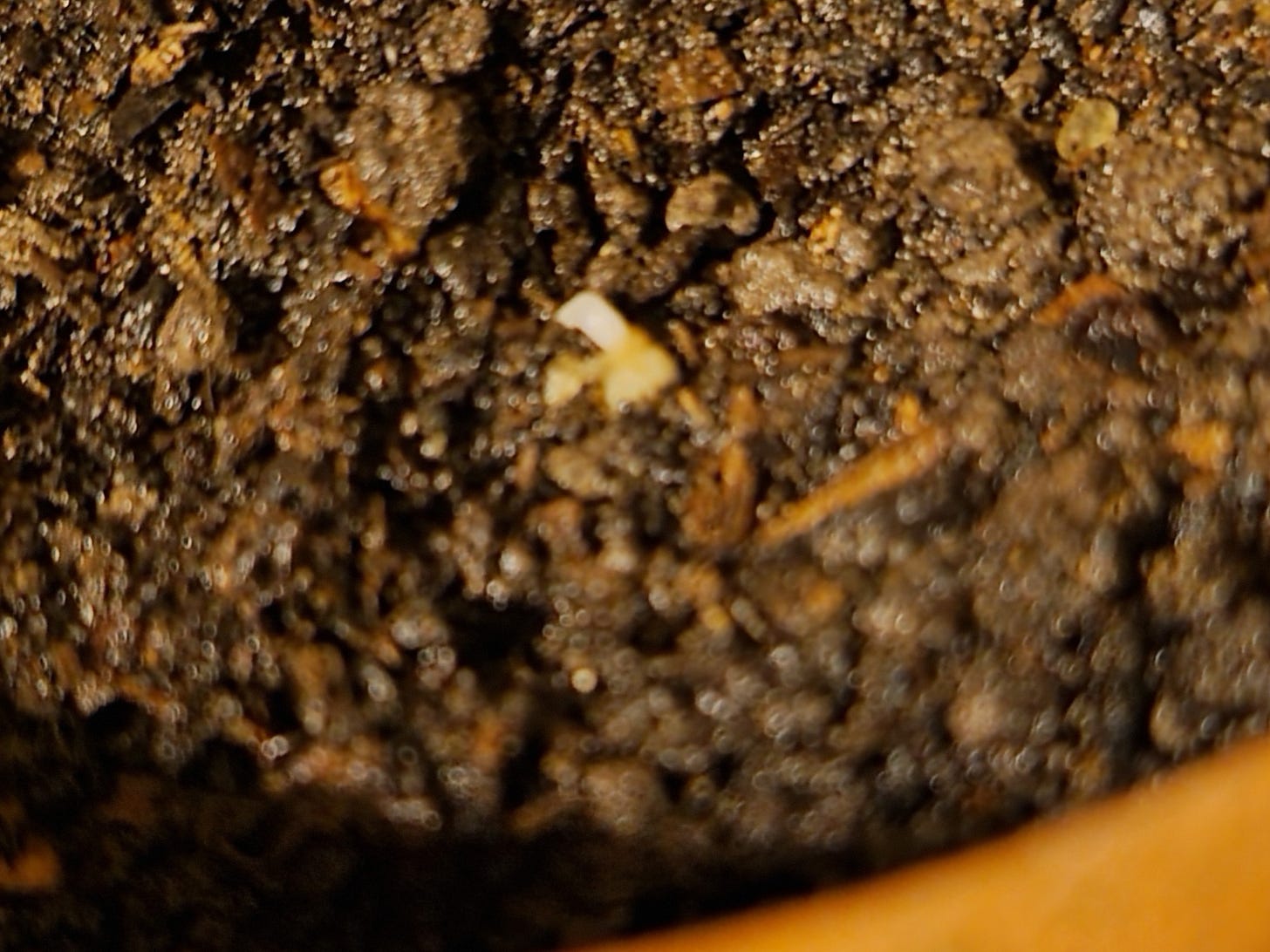You know, I’ve been gardening for over 30 years now. And that’s not counting the houseplant obsession I had as a student, or the curious habit I had as a child of sprouting peas in pots on the windowsill – not for the peas, you understand, but to give them names, like pets. Yes, I did talk to them. Oh c’mon, I was an isolated child; and besides, it led to a long and happy career.
And still, after all these years, I smile from ear to ear and do a little skip of excitement whenever I spot, as I did this morning, the crooked elbow of a seedling nudging its way clear of the compost.
The chillies are on their way: the Hungarian Blacks are first off the starting blocks, and indeed the only ones to show any sign of life yet. My theory that you can germinate chilli seeds without the need for a specially-heated propagator has proved right: these are on my bedroom windowsill, over a radiator, and they’ve clearly found conditions warm enough for their liking. They’re also from locally-sourced seed, grown organically, packed in paper and sown in home-made seed compost in a second-hand clay pot. It’s about as low-impact as seed sowing gets – the only way I could make this more sustainable is if I’d saved the seed myself.
So we’re off the starting blocks: and thank goodness for that, as there’s little else to be cheerful about. It continues to rain, and rain, and rain: we have had a few dry days here and there, but the ground is brimming with water so even when the weather lets up, it’s wiser to stay off the garden.
Thank goodness for greenhouses. I have been making use of the time to get mine up together: I’ve given the glass a good wash (so much more useful doing it now rather than at the end of the season in autumn, when it’s got plenty of time to get dirty again by spring). It’s a satisfying job: squeegee mop, bucket of hot soapy water, and a blunt knife to winkle out the moss from between the frame and the glass along with any overwintering larvae (aphids in particular seem to overwinter more and more easily these days – I’ve had the occasional infestation at seedling stage which is really irritating).
I also had a couple of panes of glass to replace, as I got a bit over-enthusiastic with the chainsaw while trimming back the trees behind. Yes, I know, I should have waited for someone else to come and help, but I needed to get it done, and how was I to know that particular branch was going to be so heavy. Of such spur-of-the-moment misjudgements are quite serious accidents made: and I should have known better.
At times like these I remind myself with much chiding of the cautionary tale of my friend’s uncle, who was strimming in the garden in summer and had taken his safety helmet off because it was too hot. He didn’t, however, stop strimming, and the blade caught a tiny stone and flung it up into his face: he ended up blind in one eye. This is serious stuff. Gardens can be dangerous places, and I was lucky to get away with a couple of panes of broken glass.
Anyway. So once I had my greenhouse shipshape and ready for the season, I could tip a couple of buckets of saved rainwater over the borders to give them a good soaking. The soil can get really dry over winter when you’re not watering it regularly as you would be in summer - not an ideal start for young plants. Then after a generous mulch with compost I planted out all my little overwintered salad seedlings: this year, lettuce ‘Black-seeded Simpson’, plus mizuna and claytonia. They perked up within a day of being in the ground: I am hopeful that they’ll give me some super-early spring salads to eat in a few weeks’ time.
That was about my only little flurry of activity this week though: I have mostly been gazing through the window watching the birds look increasingly bedraggled and miserable while the lane outside my house slowly turns into a river. However: there is an Exciting Thing happening this week. If you feel like joining Plantlife, the rather wonderful wild plant conservation charity I work for, this Wednesday you can join me, my lovely colleague Alison, and special guest – get this – Alys Fowler (yes that Alys Fowler – garden writer, former BBC Gardeners’ World presenter, that Alys Fowler) for a special members’ event on peat-free gardening.

Alys is working on a book about peat bogs at the moment which sounds as if it will be her usual captivatingly insightful, poetic writing about a landscape too many of us never visit – yet which play such an important part in keeping our planet on an even keel. Peat bogs are magical places full of hidden pools, strange insects and other-worldly plants which eat flies for tea; and they have spent the last ten thousand years laying down carbon and locking it away safely out of the atmosphere. It is truly crazy that we are digging it up, turning the world’s most efficient carbon sinks into carbon emitters in the process, and using it to grow pansies.
We gardeners can make such a difference simply by not using the stuff. So this event is all about helping you garden just as successfully in peat-free compost – it does behave a little differently from peat-based, so if you’ve been trying to switch you’ll need to tweak the way you do things a bit.
I am getting very nervous: we have many hundreds of guests signed up already, and the numbers are set to go up. If you want to add your name to the list, the link is here. See you there!






I will have a think about plant life membership. I’ve participated in plant life’s no mow may for a few years now and I’ve written about it in my may monthly articles (for my local parish magazine). I now have done really interesting things growing in the lawn. A beautiful type of cress - it has beautiful fat succulent leaves and looks like it’s from a cultivated variety and not one I’ve grown myself, perhaps come from birds visiting the garden? Lambs lettuce and sorrel also grow well in our lawn. Now I’m not a big fan of mowing the lawn at all and I discourage my husband from mowing, which means that it usually only gets cut once a year. Luckily my husband is quite comfortable with the slightly messy meadow look. Despite our efforts when I’ve participated in recording the wild flowers for Plantlife in May our wild flowers are low in quantity. It’s not a big lawn, we’ve got a standard suburban sized garden rectangular in shape so the first square shape is lawn with flower borders at the edge and then raised beds, a decked area with a greenhouse and big chicken fenced area within. In the raised beds if wild flowers pop up I do let them thrive and do their thing and I love the sorrel flowers in mid summer.
My self seeded Claytonia has small leaves big enough to harvest for delicate vitamin c packed salads which I enjoy with a teaspoon or two of fire cider drizzled over. Your timing for growing Claytonia from seed seems spot on if the self seeded coming into leaf is a clue to their natural timing.